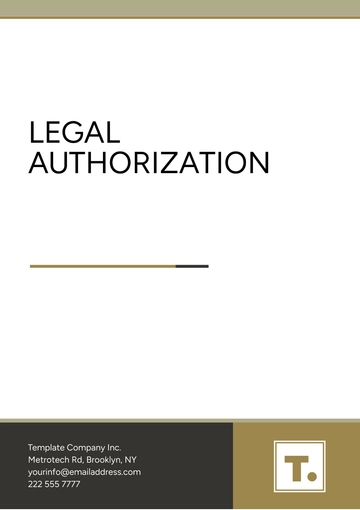Free Law Firm Knowledge Management Strategy

1. Introduction
Welcome to the "Knowledge Management Strategy Implementation Guide" designed specifically for law firms. This document, compiled by experts at [Your Company Name], is tailored to introduce your firm to the best practices, essential tools, and effective strategies needed to manage knowledge effectively. By adopting the roadmap outlined in this guide, your law firm can significantly enhance its operational efficiency and secure a competitive edge in the industry.
Key Benefits of this Guide:
Operational Efficiency: Streamline processes and reduce redundant work.
Improved Decision Making: Access to consolidated, accurate information.
Competitive Advantage: Leverage knowledge to outperform competitors.
Client Satisfaction: Deliver faster, more accurate client services by efficiently managing case knowledge.
2. Understanding Knowledge Management
What is Knowledge Management (KM)?
In the context of a law firm, KM refers to the systematic organization, storage, sharing, and utilization of the firm's internal knowledge. This includes case files, legal precedents, research materials, and client data. Proper management of these elements can lead to enhanced firm efficiency and effectiveness.
Examples of KM in Action:
Case File Organization: Digital databases that allow for quick retrieval based on various criteria such as case type, client, or date.
Precedent Libraries: Accessible repositories of past case documents that provide guidance on similar future cases.
Research Sharing: Platforms that allow attorneys to share insights and research findings seamlessly.
Client Data Security: Systems that ensure client information is securely stored and managed according to compliance requirements.
3. Foundations of a Successful KM Strategy
Developing an effective KM strategy involves a series of foundational steps outlined below. This structured approach ensures that your firm can identify its current state, define its goals, select the right tools, and standardize KM practices to maximize benefits.
Foundational Steps:
Assessing Current Knowledge Inventory
Objective: Identify and categorize the information and knowledge assets currently held within the firm.
Method: Conduct audits and use surveys to map existing knowledge resources.
Need Gap Analysis
Objective: Determine any gaps between the knowledge currently available and what is needed to meet the firm’s strategic goals.
Method: Analyze current case outcomes, client feedback, and performance metrics against industry standards.
Setting KM Goals and Objectives
Objective: Define clear, strategic aims for what the KM initiative intends to achieve.
Goals:
Increase knowledge reuse on cases by 30% within the next year.
Improve case handling efficiency by reducing search and retrieval time by 25%.
Selecting Appropriate KM Tools
Objective: Choose the tools and technologies that facilitate efficient knowledge sharing and management.
Recommendations:
Document Management Systems (e.g., LexisNexis, Westlaw)
Internal Collaboration Platforms (e.g., Microsoft Teams, Slack)
AI-Based Search Tools (e.g., IBM Watson Discovery)
Developing KM Practices
Objective: Create standardized procedures and practices for managing and disseminating knowledge.
Actions:
Develop guidelines for document upload and metadata tagging.
Implement regular knowledge review cycles to update and retire outdated information.
Train staff on best practices in knowledge capture and sharing.
4. Strategic Implementation
To transform your Knowledge Management (KM) strategy from theory to practice effectively, a strategic implementation plan is crucial. This plan should be meticulously crafted and executed to ensure all aspects of the KM initiative are aligned and functional. Below is a detailed description of each strategic phase essential for the successful rollout of KM within your law firm.
Detailed Strategic Implementation Phases:
Strategy Phase | Description |
|---|---|
Communication | Initiate a comprehensive communication plan to ensure that all team members understand the importance of KM practices, their benefits, and the protocols involved. Use multiple channels such as emails, intranet announcements, and meetings to disseminate this information. |
Training | Organize in-depth training sessions tailored to different roles within the firm. Focus on how to use new KM tools and the importance of consistent practice in KM processes. Consider creating role-specific guides and online training modules for ongoing learning. |
Integration | Work closely with IT teams to integrate KM systems seamlessly with existing IT infrastructure. This integration should support the smooth transition of data and workflows, minimizing disruptions to daily operations. |
Monitoring | Set up a systematic monitoring system to regularly assess the effectiveness of the KM implementation. Use software tools to track usage patterns, access frequency, and user engagement levels. |
Feedback | Implement a structured feedback mechanism where all users can report their experiences and suggest improvements. This should include regular surveys, suggestion boxes, and focus group discussions to capture diverse insights. |
These phases ensure that the KM strategy is not only implemented systematically but also embraced by all stakeholders within the firm, thereby enhancing the likelihood of its success.
5. Key Tools and Technologies
Choosing the right tools and technologies is pivotal for the effective deployment and sustained success of your KM strategy. These tools should align with your firm's specific needs and enhance the capabilities of your KM framework.
Essential KM Tools and Technologies:
Document Management Systems (DMS): Platforms like iManage or NetDocuments offer robust solutions for managing electronic documents and images of paper documents. They provide powerful search capabilities, version control, and secure access, essential for efficient document handling.
Intranet Platforms: Tools such as SharePoint or Confluence can create a central hub for distributing information, tools, and resources within your firm. They facilitate better information dissemination and internal communication.
Data Analytics Tools: Implement tools like Tableau or PowerBI to analyze large sets of data effectively. These tools can help in making informed decisions by providing insights into patterns and trends within your knowledge assets.
Collaboration Software: Solutions such as Microsoft Teams or Slack enhance teamwork and knowledge sharing among staff. They support real-time communication and file sharing, which are critical for collaborative environments.
Artificial Intelligence (AI): AI technologies can be integrated to automate routine tasks such as data entry and document sorting, and provide predictive insights into case outcomes, which can significantly free up time for more complex, value-added tasks.
These tools not only support the various facets of KM but also integrate with each other to form a cohesive ecosystem that enhances overall productivity and knowledge flow.
6. Measuring Success and Optimization
The final, ongoing phase of your KM strategy involves measuring its success and continuously optimizing the processes. Establishing clear metrics and regularly reviewing them will help ensure that your KM system delivers tangible benefits and evolves with your firm’s needs.
Key Performance Indicators (KPIs) for KM:
Information Retrieval Speed: Track how quickly users can find the information they need.
User Satisfaction Rates: Regularly survey users to gauge satisfaction with the KM tools and processes.
Impact on Case Outcomes: Analyze the effect of KM on the quality and speed of case resolutions.
Client Satisfaction: Measure client feedback and satisfaction levels to assess the external impact of your KM efforts.
Optimization Strategies:
Continuously collect data on the performance of KM initiatives.
Hold regular review sessions to discuss these metrics and identify areas for improvement.
Adapt and update KM strategies in response to new technologies, changing legal practices, or feedback from users.
Implementing a KM strategy is not a one-time activity but an ongoing process that requires adjustment and improvement. By focusing on these key areas, your law firm can not only implement a successful KM strategy but also ensure that it remains effective and relevant over time. This continuous commitment to KM will solidify your firm's knowledge base, enhancing both internal efficiencies and client outcomes.
- 100% Customizable, free editor
- Access 1 Million+ Templates, photo’s & graphics
- Download or share as a template
- Click and replace photos, graphics, text, backgrounds
- Resize, crop, AI write & more
- Access advanced editor
Harness the prowess of your law firm's knowledge management with Template.net's Law Firm Knowledge Management Strategy Template. Designed exclusively for legal entities, this editable and customizable template offers a roadmap to optimize knowledge utilization. Seamlessly integrate your insights with our AI editor for unparalleled efficiency. Empower your firm's strategic prowess today.





























